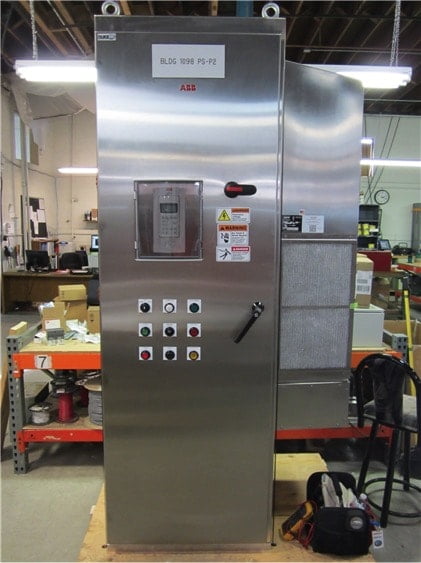How to Select an Enclosure Air Conditioner for Any Application
 The selection of an enclosure air conditioner is relatively simple provided you pay attention to the details and correctly size the unit. Proper selection is important because an air conditioner that’s too large will cycle frequently, causing relatively wide temperature fluctuations that contribute to thermal stresses. In addition, the frequent cycling could reduce the service life of the compressor by as much as 50 percent. Conversely, if the air conditioner is too small, there’s a serious risk that the enclosure temperature will get too high, potentially causing equipment damage and reduced life.
The selection of an enclosure air conditioner is relatively simple provided you pay attention to the details and correctly size the unit. Proper selection is important because an air conditioner that’s too large will cycle frequently, causing relatively wide temperature fluctuations that contribute to thermal stresses. In addition, the frequent cycling could reduce the service life of the compressor by as much as 50 percent. Conversely, if the air conditioner is too small, there’s a serious risk that the enclosure temperature will get too high, potentially causing equipment damage and reduced life.
These guidelines will help you select the right enclosure air conditioner for any application.
Establish Environmental and Ambient Conditions
As a first step, identify exactly where the enclosure will be placed. Then establish the ambient temperature range in that location. Be sure to correctly identify the maximum ambient temperature. If the unit is outdoors,obtain climate data from local authorities and look at historical maximum temperature records. take note of weather extremes and note if dust or dirt is a problem and whether any corrosive chemicals are present. Record the maximum humidity and obtain records for the dew point at that location.
Determine the optimum enclosure temperature. This should be somewhat lower than the lowest maximum equipment temperature specified in manufacturers’ catalogs. Remember that equipment life is shorter at high temperatures, so choose a moderate temperature. A temperature of 95 °F is generally considered to be a good compromise between cooling requirements and equipment life.
Identify the Total Heat Load
Calculate the total heat load of the equipment inside the enclosure. Information is available from manufacturers’ catalogs and data sheets. You can use the device power consumption as a starting point. The heat loss can be calculated by multiplying power consumption by the inefficiency of the device. For example, if a device is 90 percent efficient, 10 percent of the power consumed is converted into heat.
If the enclosure is outdoors, take note of whether it’s shaded or in direct sunlight. Also note if it has insulation, its materials of construction and color.
Determine Enclosure NEMA Rating
Enclosure air conditioners work on a closed loop cycle in a sealed enclosure, so make sure there are no openings or ventilators. Ideally, the enclosure should have a minimum NEMA rating of 12. If it’s outdoors, subject to water sprays or high levels of dust it’s likely to require a NEMA 4 rating, although a NEMA 4X is often specified. NEMA Type 4X enclosures are also required in locations subject to corrosive liquids or vapors. The enclosure air conditioner must have the same NEMA type rating as the electrical enclosure.
Identify Any Special Requirements
Identify any special requirements that may affect enclosure cooling. These may include situations where you need to monitor and manage the temperature of a specific item of equipment. This can be achieved using a remote temperature probe. Other points to look for are the positions of the air inlets and outlets to ensure that equipment will not block the airflow and any constraints that may restrict where the air conditioner enclosure is mounted.
Calculate Capacity of the Air Conditioner
The required air conditioner capacity is calculated using the total enclosure heat load, ambient temperature and the required internal temperature, while taking into account the effects of solar radiation, enclosure finish and insulation. Although it’s possible to perform the calculation manually, it’s easier and often more accurate to use a specialized online Enclosure Temperature Management calculator.
Final Selection
Using the result determined by the calculator, select an air conditioner model that is the next size up. Don’t go smaller as there’s a risk the unit will not have sufficient capacity in hot weather.
There are various air conditioner models available with different profiles, so choose a model that suits the width of your enclosure, taking special note of the location of the air inlet and outlet to ensure that the air flow is not restricted. Select a unit with an appropriate supply voltage and the correct NEMA type rating.
Identify any options that are required, and include the heater package if there’s a risk of condensation in cool weather. Don’t forget to consider other options such as the facility to monitor the air conditioner remotely. If you need help or assistance, speak to our Sales Team before finalizing your choice.

